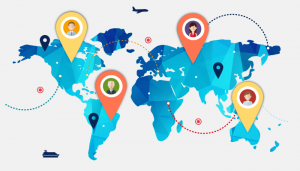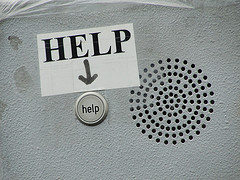We have seen rapid change, but what else should we look out for?
The use of digital in every part of our lives has profoundly changed the way we live.
Where only 10 years ago the amount of time sat in front of the television was always a gripe, today it is how long we spend on the internet or using apps on smartphones. The way we interact with companies has changed forever with the advent of social media and email, whilst how we access some of the most basic elements of our lives, from checking our money to ordering food, is done through our phones.
It has meant that the actions that would have previously required a time consuming trip to a brick and mortar location can now be done from wherever we are. But this has not meant that we are being lazier.
Our digital devices have actually made us more active, or attempted to, contrary to the general perception. They can measure how often we are moving, how far we cycle, run or walk and can even prompt us to make changes to what we are doing in order to make us healthier.
However, this is all in the present, so what are we going to be seeing in our digital future?
One of the most important aspects is going to be the interconnectivity of everything that we do from device to device.
This is not simply going to be being able to start watching Netflix on one device and then it being at the same point on the next, it will be connecting to everything we do.
It will be done through the use of the internet of things, to allow us to have all of our devices communicating and acting based on others, without the necessity of human interaction. For instance, it could notice that you are returning home from work so will turn on your heating or that your heart rate is higher than usual, which may indicate potential illness, then prompt you to action to prevent it.
It will allow for every device to become part of an overall network, each communicating with one another to improve productivity, reduce waste and increase efficiency. All will be able to be controlled through devices that we use, which could be thousands of miles away from the device it is controlling.
As networked devices will become more common, the uses for the devices and technologies that we currently use will also increase meaning that we will have greater control over everything that we do from one single piece of technology.
Companies have begun to make this a reality with things like Apple Pay, which will allow people to pay for goods and services with their phone.
This is likely to move even further into making our lives as centralised as possible, with additional uses such as being able to unlock doors, turn on your car or even automatically alert emergency services if you fall ill. Some of these are in development or deployed already, but are likely to become the normal rather than outliers in the coming years.
We have also seen a revolution in the ways that people are using their digital technology. Where it used to be purely through a desktop computer, we can now access information and files from almost any smart device anywhere in the world. This is likely to increase even further with even more devices having the capability of providing us with the same access and those that we currently use changing profoundly.
The exact specifications of what these are likely to look like are an unknown, but are likely to include biometric elements or wearable technology if current trends are to continue.
In addition to the devices that we can use to access online material, the online material itself is likely to be very different to what we are used to today. We have seen how as websites have adapted to fit with the diverse range of devices that we use, that the hamburger menu has become the definition of this. Only two years ago, people would have seen this in the top corner of a website and not known what it was. Today people know it as the universal symbol of a menu.
With the diversity of websites today, the design of them is likely to increasingly use shortcuts similar to this in order to both create an environment as similar as possible across all devices and also make the user experience as seamless as possible. This will develop as the conventions of new devices change and are adopted more broadly. Again, predicting what these would look like is impossible as they have not been created yet, but the one thing we can be certain of is that they will change in the next few years.
When it comes to looking at our digital future it is difficult to predict exactly what we are going to be seeing because digital is fluid by it’s nature. It is the reason that we can report on news seconds after it happens and change the branding of a company at the click of a button. This creates a situation where change and development is quick, but most importantly, inevitable.
(174)





